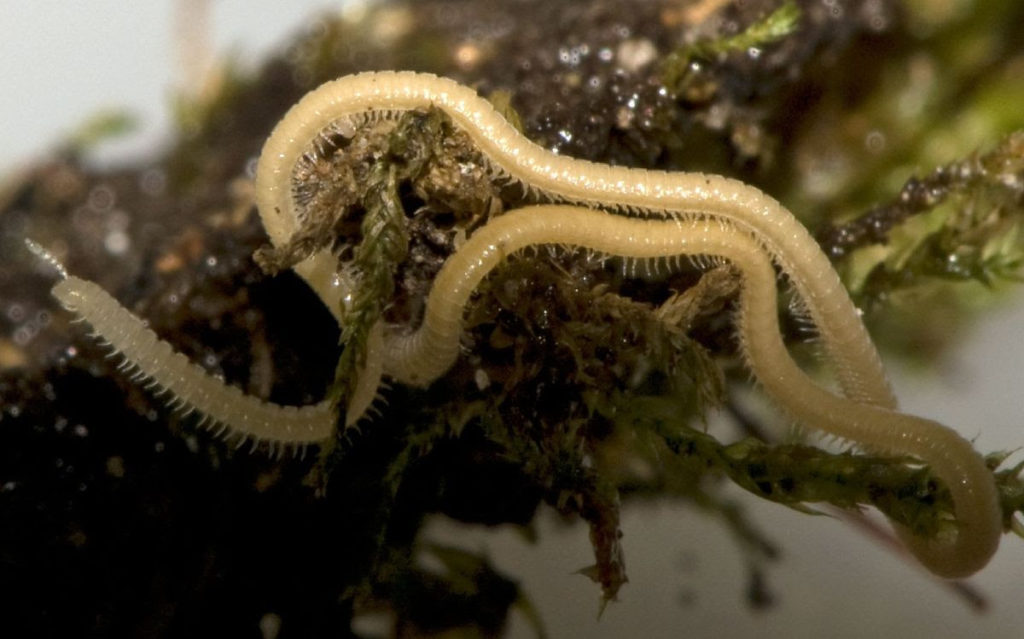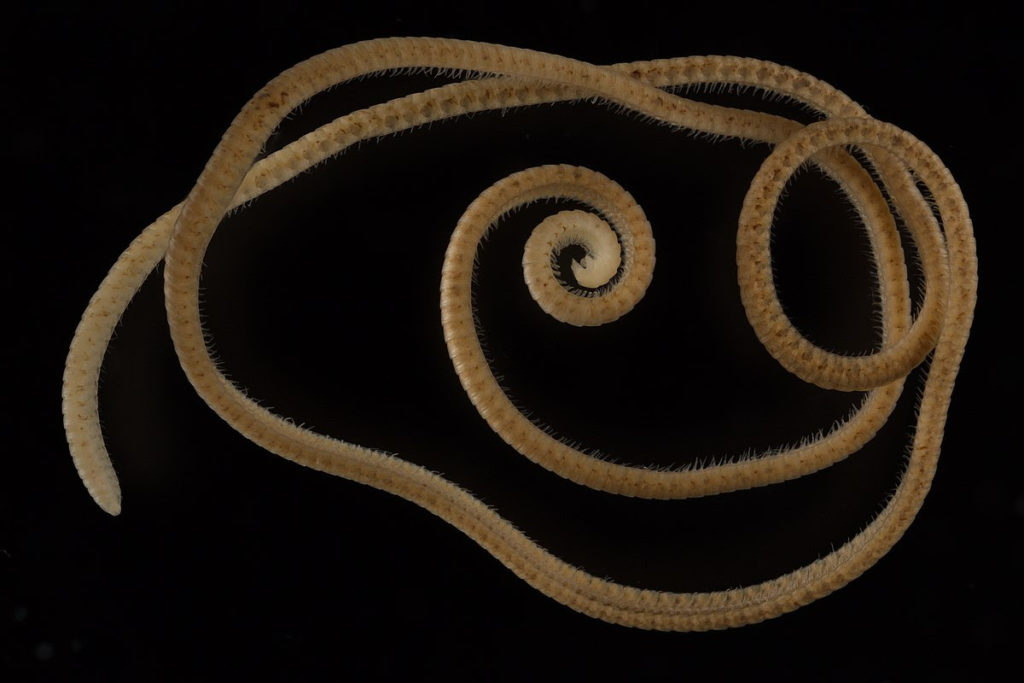Welcome back to the Lab!
Millipedes are some of the oldest creatures on earth and are well known for being the leggiest. They hauled themselves forth from the primordial ooze well before the emergence of flowering plants and changed little in the 414 million years since. But the term millipede is a bit of a misnomer; despite the name literally translating to thousand feet, not a single millipede has actually exhibited 1,000 legs. Until now.
Diplopodologists (millipede specialists) have long suspected the existence of the fabled “true millipede,” but no evidence of such a creature has ever been found. The closest candidate has held the record since 1926; the miniscule Illacme plenipes. At just 3cm long, I. plenipes has a narrow body, unlike the chunky earth movers we’re used to seeing at MBHI. While most millipedes have between 200 and 300 legs, I. plenipes has, on average, about 600, with the leggiest individual holding the record at 750.

Marek, P.; Shear, W.; Bond, J. (2012). “A redescription of the leggiest animal, the millipede Illacme plenipes, with notes on its natural history and biogeography (Diplopoda, Siphonophorida, Siphonorhinidae)”. ZooKeys 241: 77.
However, while excavating a mineral exploration site in Western Australia in 2020, scientists collected eight individuals of a previously undescribed millipede species. The site in particular, located in the Goldfields-Esperance region, is rich in resources like gold and nickel, and the landscape is speckled with drill holes for mineral extraction. The researchers placed traps at the drill sites that varied from 4 to 81 meters in depth; after approximately two months, the traps and their contents were collected and transported to a lab to be emptied and surveyed.

Fig1A from Marek, Buzatto, Shear, Means, Black, Harvey & Rodriguez. 2021.
The new species, named Eumillipes persephone (Eumillipes meaning “true thousand feet” and persephone referring to the Greek goddess of the underworld) shattered the previous record with a whopping 1,306 legs. Its narrow, super-elongated body and pale complexion are superficially very similar to that of I. plenipes, but a genetic analysis reveals no close relation between the two species, placing them in entirely different orders. However, the fact that they are not closely related reveals a more interesting tale of their life histories; in order to be perfectly adapted to their dark, subterranean environments, they both evolved to be super-elongated, eyeless, and pale. Further genetic analysis shows that the common ancestor shared by these two species does not exhibit these traits, meaning they evolved after the lineage split, making this an excellent example of convergent evolution (when two distantly related species evolve similar traits to suit their environments).
The importance of species discovery in somewhat novel habitats cannot be understated. In their paper, Marek et al. write, “These underground habitats, and their inhabitants, are critically understudied, despite their ecological importance in filtration of groundwater and screening of environmental toxins. […] Whether troglophilic species of Eumillipes exist in other parts of Western Australia is an uncertain, but potentially rich avenue of discovery.”
It just goes to show that playing in the dirt is always worthwhile.
Until next time, thanks for visiting the lab!
Bug Wrangler Brenna
brenna@missoulabutterflyhouse.org
Want to revisit a previous Notes from the Lab issue? Check out our archive! Do you want to request a subject for an upcoming issue? Email me at the address above and put “Notes from the Lab” in the subject line.